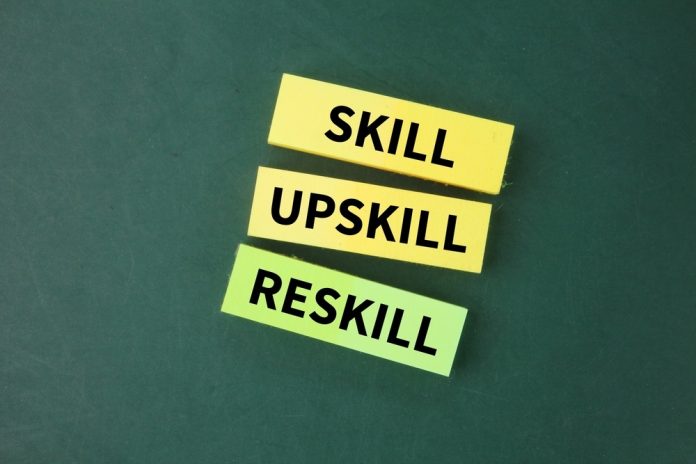
Organizations are navigating an increasingly complex landscape marked by economic uncertainty, rapidly evolving skill requirements, and shifting workforce expectations. In addition, businesses must cope with frontier technologies such as artificial intelligence (AI), which are poised to fundamentally reshape how products and services are delivered while the ground is still shaking underneath them. This environment requires businesses not only to meet immediate demands but also to anticipate future challenges.
While adopting disruptive technologies to stay competitive is a common knee-jerk reaction, strategically developing employees’ skills helps build a foundation for adapting to new technologies and changing market demands. Let’s explore four key Learning and Development (L&D) and Human Resources (HR) trends, providing insights to help organizations thrive in a future peppered with uncertainty.
1. L&D and HR will be key to building resilient organizations.
According to a World Economic Forum survey, 6 in 10 workers will require additional training before 2027, with analytical thinking, creative thinking, and AI utilization emerging as the top upskilling initiatives. In this volatile environment, marked by economic fluctuations and disruptive technologies, L&D and HR teams must expand beyond their traditional support functions to help organizations adapt and thrive.
In the same Future of Jobs survey, 48 percent of companies identified improving talent progression and promotion processes as key areas that can increase the availability of talent to their organization. Meanwhile, 34 percent pointed to effective reskilling and upskilling strategies as critical elements for organizational transformation.
With the right collaborative tools and an aligned strategic focus, L&D and HR professionals can establish robust learning frameworks and create impactful learning experiences that prepare employees for emerging challenges. Depending on an organization’s goals and needs, these development programs could involve increasing autonomy and creativity in AI use, enhancing cross-functional roles, or providing key employees with leadership and social influence training.
2. Large enterprises will continue to struggle to scale effective programs with existing learning technology stacks.
Despite the increased accessibility to frontier technologies, many organizations still struggle to scale impactful learning programs. Traditional learning stacks, while chock-full of dynamic features, often lack the interoperability and scalability required for successful integration across diverse teams and locations, especially with global footprints. Moreover, organizations commonly build tech suites minus the intentionality and planning focused on evolving organizational needs and emerging skill requirements.
As Intranet expert James Robertson said, “Nowadays, companies provide their staff with numerous digital tools and applications. The problem lies not in the shortage of technology but in the complexity and variety of different tools, which don’t work well together.”
As enterprises look to scale programs more effectively, many are experimenting with hybrid models that blend digital and experiential learning or leverage microlearning techniques to provide just-in-time training. AI will play a key role for those who realize it is not all about creating more content at less cost. However, the real impacts will hinge on L&D teams’ ability to adapt innovative learning initiatives while aligning knowledge-transfer content with specific skill needs and departmental objectives to drive meaningful learning outcomes.
3. Mentoring and one-to-one learning programs will be key to personalizing development.
In a world where personalization is crucial to engagement, one-to-one learning methods and tools that facilitate them will become even more valuable for L&D initiatives. There are several benefits to this approach, including:
- One-to-one mentorship programs allow organizations to foster individualized learning relationships, a method proven to increase retention and satisfaction.
- In one-to-one settings, mentors can pass tacit knowledge and more easily share practical experiences and insights with real-world applications that may be difficult to capture in formal training programs.
- Learning paths can be tailored to meet the mentee’s unique skills, upskilling/reskilling needs, and organizational goals, with mentors providing individualized advice and feedback.
One-to-one learning through effective mentoring programs will provide results for organizations that are able to scale them. Fortunately, modern learning platforms with AI-powered algorithms can match mentors and mentees based on skills, experience, and development goals. Aside from making it easier to align programs with organizational objectives, these features help match mentorship relationships with each mentee’s unique learning needs, style, and career aspirations.
4. Proof of learning will be a new standard for success.
Unlike traditional assessments focused on theoretical knowledge and completion rates, redefined L&D standards will prioritize practical application to demonstrate proof of skills. For L&D teams, this could mean designing programs with opportunities to practice real-world tasks within the learning experience as demonstrable proof points of skill progression completed in safe environments and coupled with structured, yet immediate, feedback loops.
In an economic environment where profit and ROI are vital drivers shaping business decisions, companies will start measuring the success of learning programs by their impact on key performance indicators (KPIs), such as productivity improvements, employee retention, customer satisfaction, or sales growth. This approach enables L&D teams to demonstrate the tangible value of learning programs, linking L&D investments directly to organizational performance.
By integrating these impact-oriented metrics, organizations not only showcase the ROI of their programs but also establish L&D as a strategic partner in achieving core business objectives.
L&D teams will continue to face challenging conditions in 2025, but those challenges will manifest as opportunities for organizations that make the right choices and investments.

